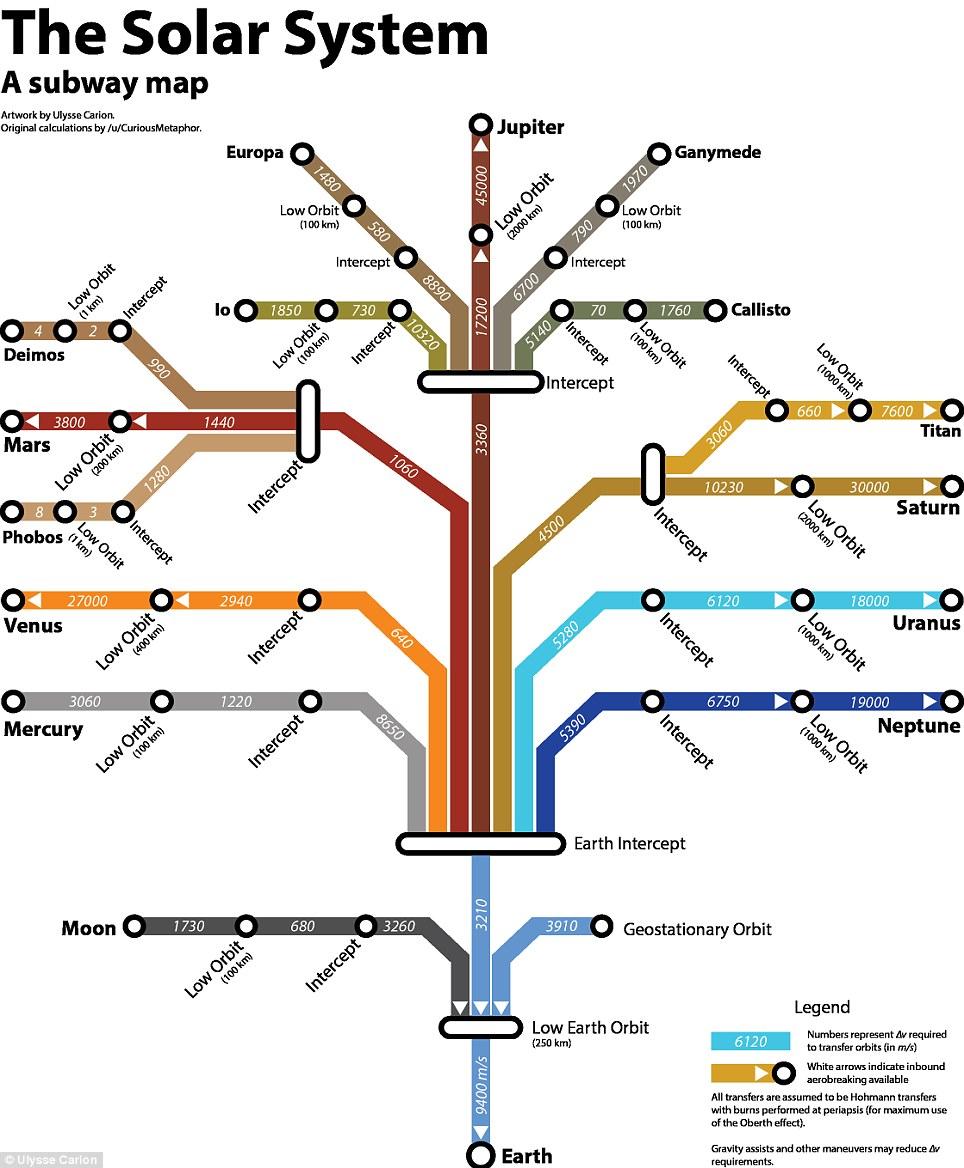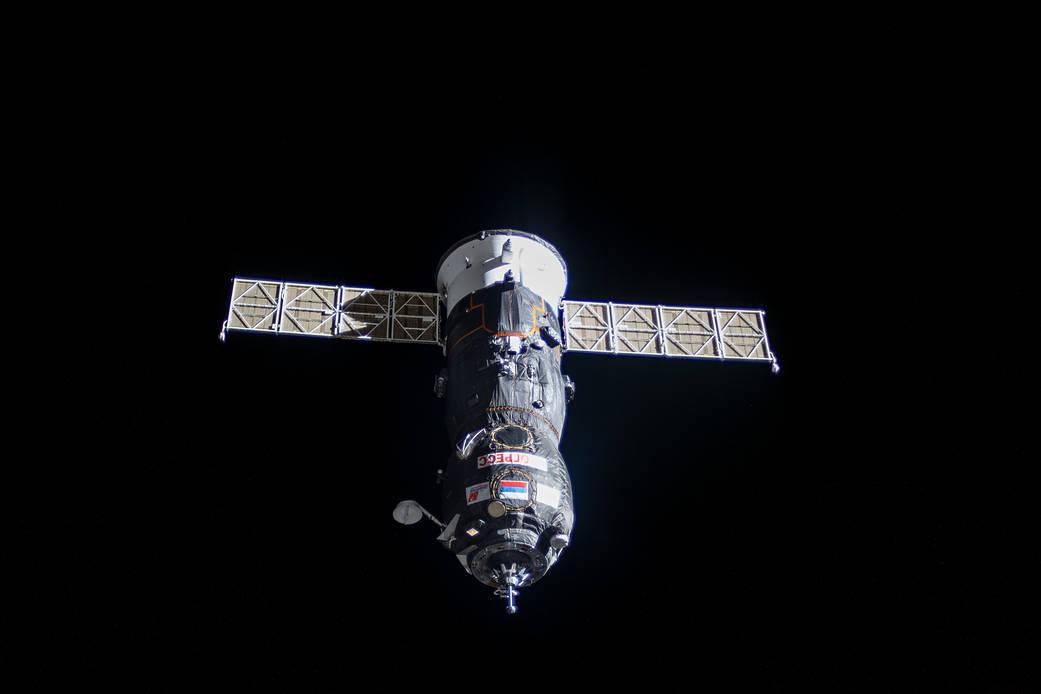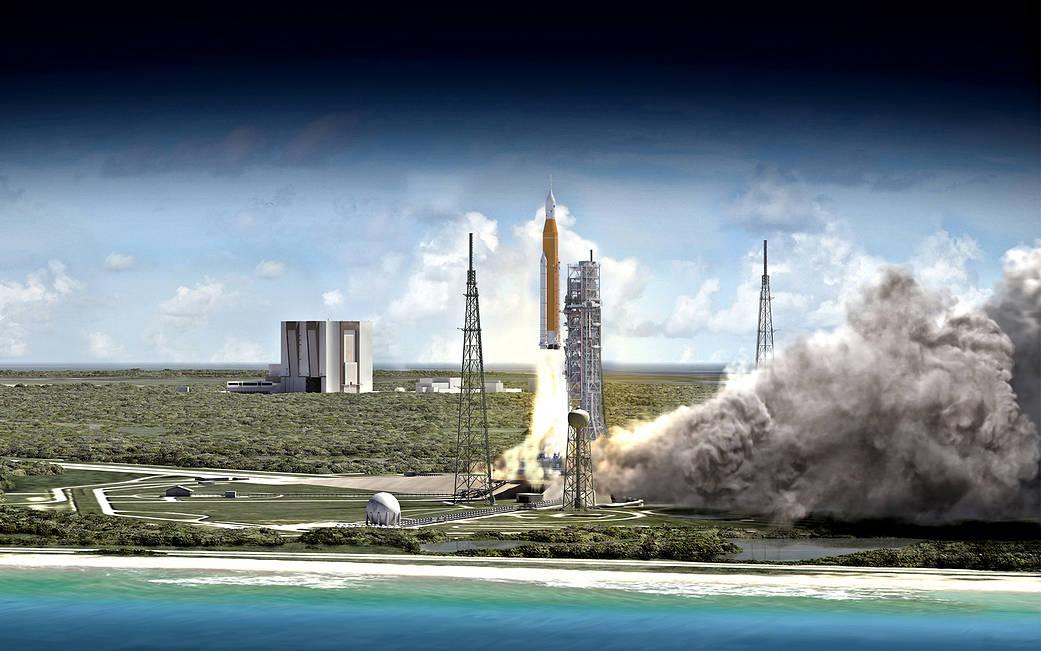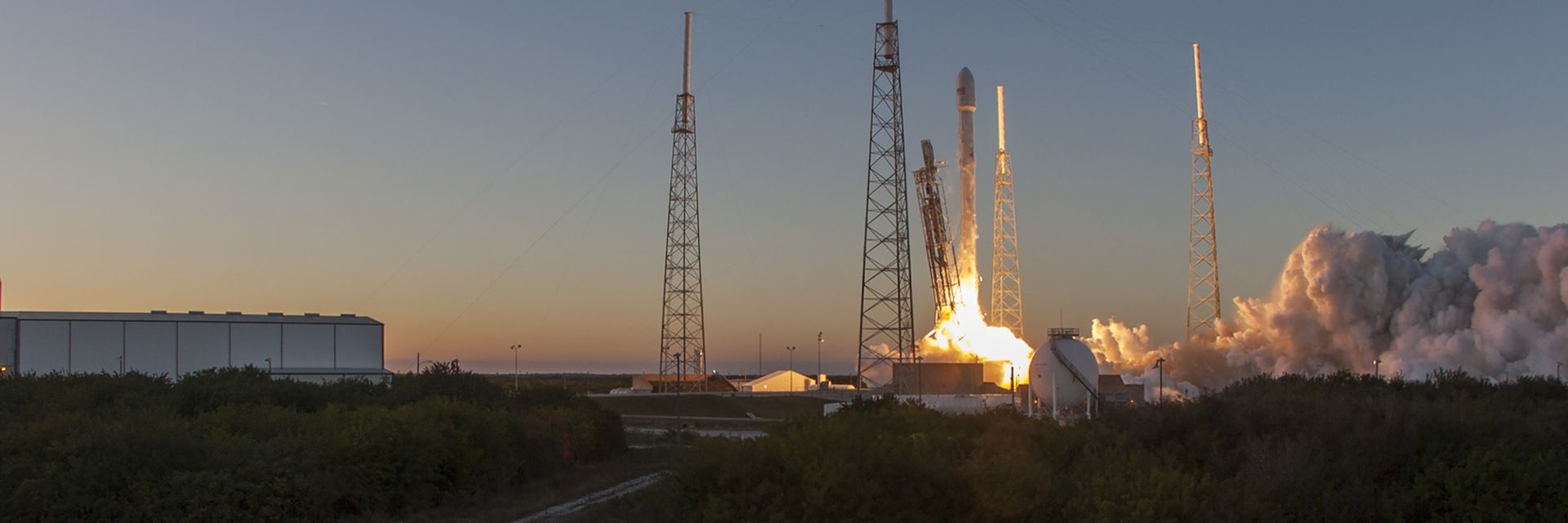Humankind’s giant leap was not the first step on the lunar surface. Instead it was launching rockets into orbit and escaping Earth’s gravity. This was made possible by early pioneers at NASA who themselves were guided by an even earlier generation of rocket scientists. As we’re now on the cusp of returning to the Moon as part of the “new space race,” it’s a good time to look at all we’ve learned since Apollo about living outside our earthly comfort zone.
◊
In a history-making event in December 2020, astronauts returned from the International Space Station (ISS) courtesy of Space-X’s Dragon capsule. This was the first time that NASA used a private rocket company to ferry crew into space and back. The completion of the mission also marked a return of NASA’s direct involvement with real-life astronauts after retiring its Space Shuttles in 2011.
In case you don’t regularly read the science section of the news, for the last 10 years NASA has been hopping a ride (and paying for it) on Russian rockets to reach the ISS. With the SpaceX era, the U.S. can again launch its own astronauts from the fabled Kennedy Space Center in Florida.
It’s easy to take for granted that SpaceX is a space-age taxi company, the Falcon rocket carrying a Dragon capsule is meant to be reused 100 times, and that Earthlings can live on the ISS for months at a time. We’re a long way from the early days of NASA when millions gazed at their old-style TV sets just to watch the massive Saturn rockets slowly move upward from the launch pad.
Science nerds, space fanatics, Trekkies, followers of Neil deGrasse Tyson, and obsessive documentary watchers are excited by the prospect of sending humans to Mars and perhaps Venus. SpaceX’s media-savvy owner Elon Musk has, unsurprisingly, hyper-optimistic goals for establishing a self-sustaining city on Mars by the year 2050.
Speculating about space exploration is lots of fun (and good business these days), but, as it turns out, the actual scientific facts can be just as inspiring as some of the wilder projections. This new space race is, in fact, driven by early NASA innovators and rocket pioneers – but it’s a history that’s not well known to the public.
The next generation of space explorers will take us back to the Moon and perhaps establish a self-sustaining colony. And that lunar experience should, in theory, help us to live on Mars and other worlds. However, these space cadets are standing on the shoulders of nerd giants who worked out all the constraints of what’s possible for space travel and space living, and mapped out the various steps humans must undertake to colonize space.
How did Venus, "Earth's twin," become a hellish landscape, and how might we colonize it? Learn how on MagellanTV's original space documentary series, Exploring Venus.
Rocket Science for Poets
To get our space legs, of course, we first needed to leave our home planet. Want to launch a rocket to Mars or our sole moon? Or put a satellite into low-Earth orbit (LEO) 100 to 600 miles above the Earth’s surface? The rocket business has its own unbreakable laws, and even Musk, Jeff Bezos, and other Internet billionaires are limited by them. Or to paraphrase a famous fictional rocketeer, Star Trek’s Montgomery “Scotty” Scott: “I can't change the laws of physics just because your press release says something silly.”
To launch into LEO, the first stepping stone to outer space, you need to give a rocket a good shove so it reaches an astonishing velocity of about 8 kilometers per second (or over 17,000 miles per hour) – the minimum required to maintain an orbit. To attain that speed, the rocket requires highly-explosive propellant ... and lots of it.

Consider delta-v or velocity change to be a kind of mileage metric for space travel.
(Image Credit: Ulysse Carion via Reddit)
If you look at the specs for the Saturn V rocket – and what nerd hasn’t! – it works out that 88% of the Saturn V’s weight is fuel, about 5.5 million pounds of it, and the remaining 15% is everything else: engines, the rocket skin, and let’s not forget the Apollo spacecraft carrying the human astronauts.
A rocket is really a giant fuel tank with a teeny part at the top, otherwise known as the payload, that gets hurled into orbit at high speed. The actual proportions of fuel to everything else were calculated by the great Russian scientist, Konstantin Tsiolkovsky, in the latter part of the 19th century. According to Tsiolkovsky’s formula most of the mass of the craft, whether it’s Musk’s Falcon 9 or Bezos’s New Shepard, has to be propellant and that leaves little left for the payload.
To escape Earth’s gravity, the final Saturn stage added more velocity – “delta-v” in rocket talk – to reach about 11 kilometers/second (over 24,000 miles per hour) for its three-day journey to the Moon. Most of the Saturn V’s fuel is consumed during the first giant step, but each subsequent change in velocity – to go into lunar orbit, land on the Moon, and relaunch – requires still more propellant. In fact, the fuel usage to travel anywhere to the Moon and the rest of the solar system can be precisely calculated based on Tsiolkovsky’s formula (see the graphic above).
On their return, NASA cleverly used the Earth’s atmosphere to help slow down the capsule without requiring much in the way of propellant. It’s a genius method to get more delta-v per gallon, and these and other tricks are still exploited by the new space companies and NASA. Like water and oxygen, rocket fuel is also a precious commodity in space.
“The giant leap for mankind is not the first step on the Moon but attaining Earth orbit. If we want to break the tyranny of the rocket equation, new paradigms of operating and new technology will be needed. If we keep to our rockets, they must become as routine, safe, and affordable as airplanes.” —NASA astronaut, Don Pettit.
Working in the background, NASA engineers had pre-calculated the flight trajectories and were constantly monitoring the location of the spacecraft from the ground, relaying the position back so corrections to the path could be made. There was a guidance computer on board – one of the first based on integrated circuits – that effectively flew the Apollo module, firing the rockets when adjustments had to be made.
Not to diminish the role of astronauts, but the Apollo mission was, in a sense, rocket science equations, developed by brilliant minds and checked by “hidden figures,” which had been programmed on computer hardware to run the show.
Water and Oxygen Recycling Makes Life Possible on the ISS
Where do humans fit into space exploration? NASA established the ISS to discover the constraints on the human experience in space – to solve the critical human equation.
NASA has long understood that knowledge gained from living and working on the ISS would be leveraged for a lunar colony. The challenges of living on the Moon, including low gravity, no oxygen and liguid water, and temperature extremes, have been explored and partially solved as a result of 20 years of research conducted on the ISS.
“The oxygen would last two men for about twenty days, and Venus was thirty days ahead. One did not have to be a calculating prodigy to see at once that one man, and one man only, might yet live to walk the metal streets of Port Hesperus.” —Arthur C. Clarke, from Expedition to Earth
While NASA regularly ferries water and other supplies to the ISS, its own life support systems do a good enough job of recycling water. They reuse and clean waste water from hand washing and the astronauts’ own outbreaths. And they go even further by recycling, gasp!, pee – both from humans and the ISS’s small community of lab animals. (Space living is not for the squeamish.) The internal recycling is not perfect, since some H20 is lost in the process, and hence the ISS needs periodic water shipments from Earth.
Oxygen is of course essential for humans, and the NASA engineers designed another recycling system to convert human carbon dioxide waste into oxygen: a special Sabatier reactor heats the astronauts CO2 and pulls out the O2. A separate unit also squeezes more oxygen from water: electrolyzing it into its basic components of hydrogen and oxygen. Water then does double duty, and so is even more precious in space environments.

Caption: Russian Progress 76 resupply ship ready to dock with the ISS. (Image Credit: NASA)
An interruption in the supply chain from Earth would have serious consequences. In fact, the unthinkable almost happened: Over an eight-month period starting in late 2014, three different resupply rockets failed, and the ISS began to run low on frozen and dried food – the mainstays of the astronaut diet – and water. However, a Russian resupply mission finally launched successfully in the summer of 2015, and the space community collectively breathed a huge CO2 sigh of relief. Unlike our home world, the space station is not self-sustaining. And scientists will have to do even more, as we’ll soon see, for humans to colonize the Moon.
Lunar Colony: Gateway to Mars and Venus
In NASA’s plans for exploration, the way to Mars and Venus begins by first establishing a small permanent encampment on the Moon. It’s not as exciting as Musk’s pitches about cities on Mars, but it is far more realistic. NASA sees the Moon as an ideal platform for exploration and colonization because of its rich resource potential, particularly frozen water buried under the surface that would make it possible for the colonists to live off the lunar landscape.
Artemis is the name given to NASA’s program for returning to the Moon and making lunar travel a more routine matter than was possible during the original Apollo missions. The first step in this plan is the development of a Saturn V replacement, the massive and more powerful Space Launch System (SLS). If all goes according to their timeline, SLS will propel an Orion capsule to a lunar orbit, and then a specially designed lander will place astronauts back on the surface by 2024.

Artist's rendering of NASA's massive Space Launch System (SLS) that will carry astronauts to the Moon.
(Image Credit: NASA)
NASA also has plans to use the SLS to send lunar research probes to search for, among other things, water that’s known to exist on the Moon’s South Pole. The huge rocket will carry a mobile robot payload that will land on the surface and map out frozen water deposits. Just as on the ISS, astronauts on the Moon will also eventually rely on water, mined in this case from lunar ice, to produce life-giving oxygen. (And, no doubt, there are exciting marketing opportunities with lunar H20 that Musk and other space merchants are looking into.)
However, at this point, Artemis has the modest goal of establishing a small base camp that will allow perhaps 10 astronauts to live and explore the surface for up to 45 days at a time. No, it won’t be a space city, but it will help, as NASA’s Artemis presentations constantly point out, support “Mars mission analogs.” In other words, everything they learn about living on the Moon will apply to Mars, and so the Moon is the real gateway to Mars and beyond.
Space travel will never be the story of a single giant leap or of one person’s indomitable ambition. When we see a spectacular rocket launch or astronauts roaming around on an alien landscape, we should appreciate that the infrastructure to support interplanetary travel and space living was made possible by the talents of anonymous engineers, space researchers, biologists, and rocket scientists implementing carefully planned and analyzed steps. It ain’t sexy, but that’s life in space.
Ω
Title Image: TESS Launch (Credit: NASA)

